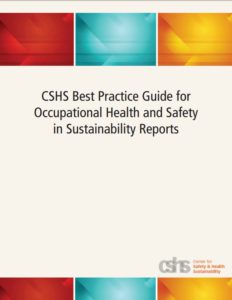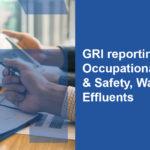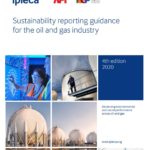
The Center for Safety and Health Sustainability is pleased to announce the release of its Best Practice Guide for Occupational Health and Safety in Sustainability Reports, which provides occupational health and safety (OHS) professionals with metrics and best practices in OHS sustainability reporting.
According to CSHS Chair Kathy A. Seabrook, “Investors and other key stakeholders are demanding more transparency, which translates to higher expectations for reporting on corporate performance, including materiality. This presents important implications for OHS performance reporting. CSHS is committed to supporting OHS professionals and their organizations as they negotiate these changes to meet the broadening needs and expectations of investors and other key stakeholders.”
It is with this end in mind that CSHS has launched an initiative to standardize OHS reporting that allows for comparison among organizations worldwide. CSHS views this campaign as a critical step in improving OHS performance and, ultimately, preventing worker injuries, illnesses and fatalities.
These metrics proposed by CSHS, developed through global collaboration among the world’s largest occupational health and safety professional bodies, are currently being used in some format by a multitude of organizations around the world. They are standards of performance which are already accepted, understood, and operationalized by those managing health and safety at work.
The CSHS metrics have a broader scope and wider applicability in assessing workplaces worldwide across all geographical boundaries. In addition to addressing OHS needs at large organizations, they are scalable and therefore applicable to small and medium-sized enterprises, extend coverage to temporary or fixed duration contract workers, and increase focus on workers for suppliers in the developing world. They present the recommended minimum level of OHS performance reporting that is applicable to all organizations.
Sustainability information helps business leaders identify opportunities for risk mitigation and value creation while helping investors and analysts understand factors that affect investment performance.



